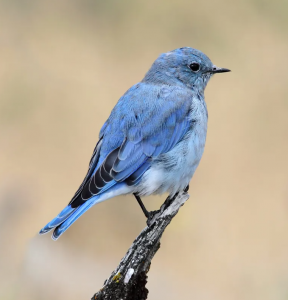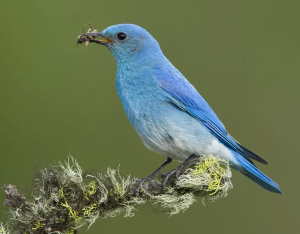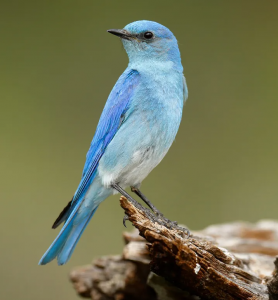What is Nevada’s State Bird?

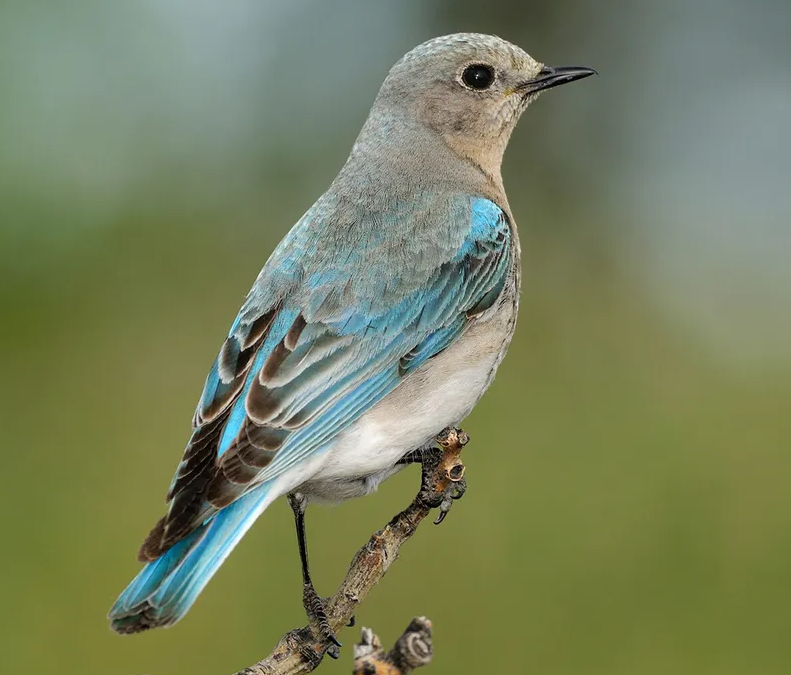
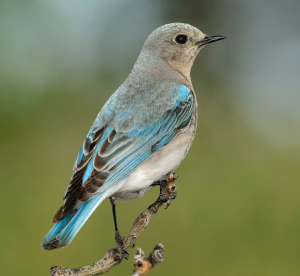 Nevada’s state bird is the mountain bluebird (Sialia currucoides), an azure thrush that is native to North America. In 1967, the Nevada General Assembly adopted the mountain bluebird as the state bird due to its year-round residence in the state and the loss of nesting sites caused by pesticide use and the loss of old trees. The federal government also designated the bird as a protected species.
Nevada’s state bird is the mountain bluebird (Sialia currucoides), an azure thrush that is native to North America. In 1967, the Nevada General Assembly adopted the mountain bluebird as the state bird due to its year-round residence in the state and the loss of nesting sites caused by pesticide use and the loss of old trees. The federal government also designated the bird as a protected species.
Both male and female mountain bluebirds feature brilliant azure feathers. The male bluebird has blue on its head and back, while the female’s blue feathers comprise the wings, rump, and tail. The male has a white or bluish-white stomach, while the female has a brown head, back, and stomach. These tiny birds weigh just an ounce and measure six inches in length, typically, with an average wingspan of 11 to 14 inches.
Mountain bluebirds prefer wide-open spaces and enjoy chillier weather. They make their nests at an elevation of 5,000 feet, but in the summertime, they willingly live at an elevation of up to 12,000 feet. In the winter months, they might relocate to Nevada’s valleys or to sea level. When food grows scarce, they will move to the foothills, the lowlands, or Nevada ranchlands.
When a male reaches breeding age, he stakes out a breeding territory that features numerous possible nesting grounds. He begins singing to attract mates each day and encourages them to consider the available nesting sites. The female bluebird chooses the nesting hole and constructs the nest inside it. The male hunts for food and delivers it to the nest, using mate feeding. The female uses a deserted hole sometimes constructed by a woodpecker or a hole in a tree that formed naturally, adding grasses and twigs to it to create a comfortable bed inside.
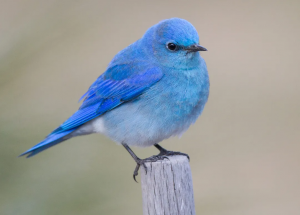 Mountain bluebirds weave their nest in the shape of a three to four-inch deep basket using hardy materials. These materials include woven grasses, pine needles, woven grass, hair, straw, and feathers. The birds clean the materials before adding them to the nest and remove the trash, such as cigarette butts. The roomy next provides room for both parents and the eggs, plus it can accommodate the hatched baby birds.
Mountain bluebirds weave their nest in the shape of a three to four-inch deep basket using hardy materials. These materials include woven grasses, pine needles, woven grass, hair, straw, and feathers. The birds clean the materials before adding them to the nest and remove the trash, such as cigarette butts. The roomy next provides room for both parents and the eggs, plus it can accommodate the hatched baby birds.
Once she constructs the nest and they dine, they begin copulating. The female adds a bit to the nest each day, and the two birds copulate throughout the nest building. The incubation begins, lasting for 13 to 14 days. While the male hunts for food, the female cares for the eggs by sitting on them. Once they hatch, both parents care for their brood. He continues to hunt for food, delivering dinner for the entire family to the nest.
Mountain bluebirds procreate massive families. They form a nuclear family that grows into a community. Their many children live nearby, moving to their own tree or hole as fledglings. The various branches of the family help each other out, and a careful birdwatcher can see fledglings helping to feed their parents’ newborns. Baby mountain bluebirds can’t leave the nest for the first 12 days of their lives.
The mountain bluebird is an essential species for Nevada, and it plays a crucial role in the ecosystem. The birds primarily feed on insects during the breeding season, including beetles, ants, and caterpillars. In the winter, they switch to a diet of berries and seeds. The birds also help control insect populations, especially during the breeding season when they consume large numbers of insects.
